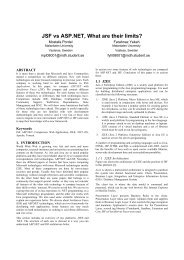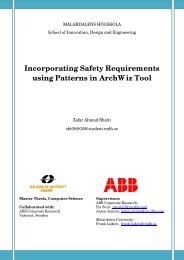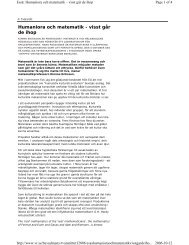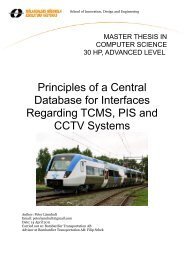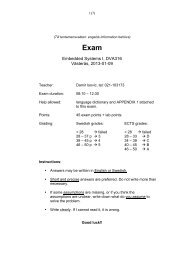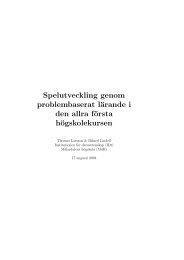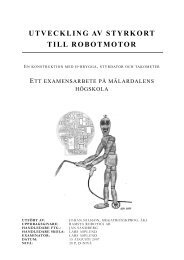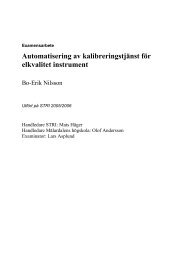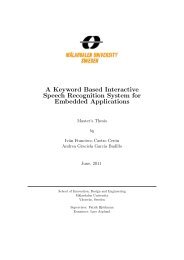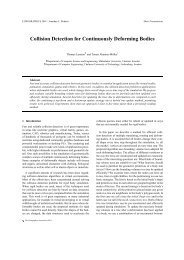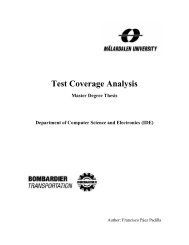UML PROFILE FOR SAVECCM - Research
UML PROFILE FOR SAVECCM - Research
UML PROFILE FOR SAVECCM - Research
You also want an ePaper? Increase the reach of your titles
YUMPU automatically turns print PDFs into web optimized ePapers that Google loves.
Save<strong>UML</strong> transformations<br />
The <strong>UML</strong> CASE tool (in this case the Rational Software Modeller) is used for<br />
creating a <strong>UML</strong> user model. By applying the Save<strong>UML</strong> profile, <strong>UML</strong> elements can<br />
be stereotyped for modelling SaveCCM elements. The application of the profile is<br />
necessary in order to create a model which can be transferred into a SaveCCM<br />
model. RSM uses an eXtensible Markup Language (XML) – based file for<br />
representing the model information.<br />
The SaveCCM design tool is Save-IDE. SaveIDE uses several files for<br />
representing model information. Those files are also compatible with XML and are<br />
used by the transformation tool to perform the SaveCCM to <strong>UML</strong> transformation.<br />
The transformation tool can be used either as an Eclipse plug-in or as a<br />
standalone application and performs transformation in both directions, <strong>UML</strong> to<br />
SaveCCM and SaveCCM to <strong>UML</strong> models. The transformation tool uses the<br />
transformation library to perform transformations. The transformation library<br />
contains eXtensible Stylesheet Language (XSL) style sheets for transforming from<br />
Save<strong>UML</strong> into SaveCCM and SaveCCM into Save<strong>UML</strong> models. Input files based<br />
on XML are parsed through the XSL style sheets and then XML – based output<br />
files, compatible with the desired tool, are generated.<br />
7.3 XSLT transformations<br />
In order to transform XML – based representations of user models, XSL<br />
transformations are used. They are a part of the transformation library which is<br />
based on the Saxon XSL processor.<br />
Extensible stylesheet language transformations (XSLT) is a language for<br />
transforming XML documents into other XML documents. It is a part of the W3C<br />
recommendation and its current version is 1.0. XSLT is designed for use as part of<br />
XSL, which is a stylesheet language for XML.<br />
A transformation in the XSLT language is expressed as a well-formed XML<br />
document. A stylesheet contains a set of template rules. Each template rule has<br />
two parts: a pattern which is matched against nodes in the source tree and a<br />
template which can be instantiated to form part of the result tree. This allows a<br />
stylesheet to be applicable to a wide class of documents that have similar source<br />
tree structures. On the other hand, the structure of the result tree can be<br />
completely different from the structure of the source tree. In constructing the result<br />
tree, elements from the source tree can be filtered and reordered, and arbitrary<br />
structure can be added.<br />
Transformations between <strong>UML</strong> and SaveCCM models could also be<br />
implemented using Java programming language, since Java provides a good<br />
68



